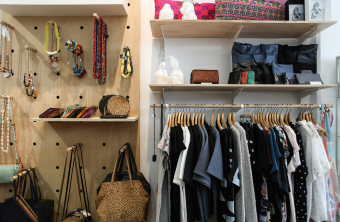

In recent years, there has been a growing awareness of the environmental and social impacts of the fashion industry. As consumers become more conscious of the need for sustainability, there has been a surge in demand for eco-friendly and ethically made clothing. Sustainable fashion goes beyond just being a trend – it’s a movement towards more responsible and ethical practices that prioritize the well-being of people and the planet. In this comprehensive guide, we’ll explore sustainable fashion brands and practices, helping you make informed choices and embrace eco-chic style with confidence.
Before we delve into sustainable fashion brands and practices, let’s first understand what sustainable fashion entails:


1. Eco-Friendly Materials: One of the cornerstones of sustainable fashion is the use of eco-friendly materials that have minimal impact on the environment. By choosing materials that are renewable, biodegradable, and non-toxic, sustainable fashion brands can reduce their environmental footprint and promote a more circular economy. Some common eco-friendly materials include:
2. Ethical Production Practices: In addition to using eco-friendly materials, sustainable fashion brands prioritize ethical production practices that ensure the well-being of workers and communities. By paying fair wages, providing safe working conditions, and promoting transparency and accountability throughout the supply chain, sustainable fashion brands can create positive social impact and empower workers to thrive. Some common ethical production practices include:
3. Slow Fashion Movement: The slow fashion movement is a response to the fast fashion industry’s emphasis on cheap, disposable clothing and exploitative labor practices. Slow fashion encourages consumers to buy less and invest in high-quality, timeless pieces that are made to last. By prioritizing quality over quantity, supporting independent designers and artisans, and embracing mindful consumption, consumers can reduce their environmental impact and promote a more sustainable fashion industry. Some key principles of the slow fashion movement include:
4. Second-hand and Vintage Shopping: Another sustainable fashion practice is shopping second-hand or vintage, which extends the life cycle of clothing and reduces waste. By giving pre-loved items a second chance, consumers can reduce their environmental impact and support a more circular economy. Some ways to incorporate second-hand and vintage shopping into your wardrobe include:
Sustainable fashion is not just a trend – it’s a movement towards a more ethical, equitable, and environmentally conscious fashion industry. By supporting sustainable fashion brands and practices, you can make a positive impact on the planet and support communities around the world. Whether it’s choosing eco-friendly materials, supporting ethical production practices, embracing the slow fashion movement, or shopping second-hand and vintage, there are many ways to incorporate sustainability into your wardrobe. So go ahead, embrace eco-chic style, and join the movement towards a more sustainable future for fashion.